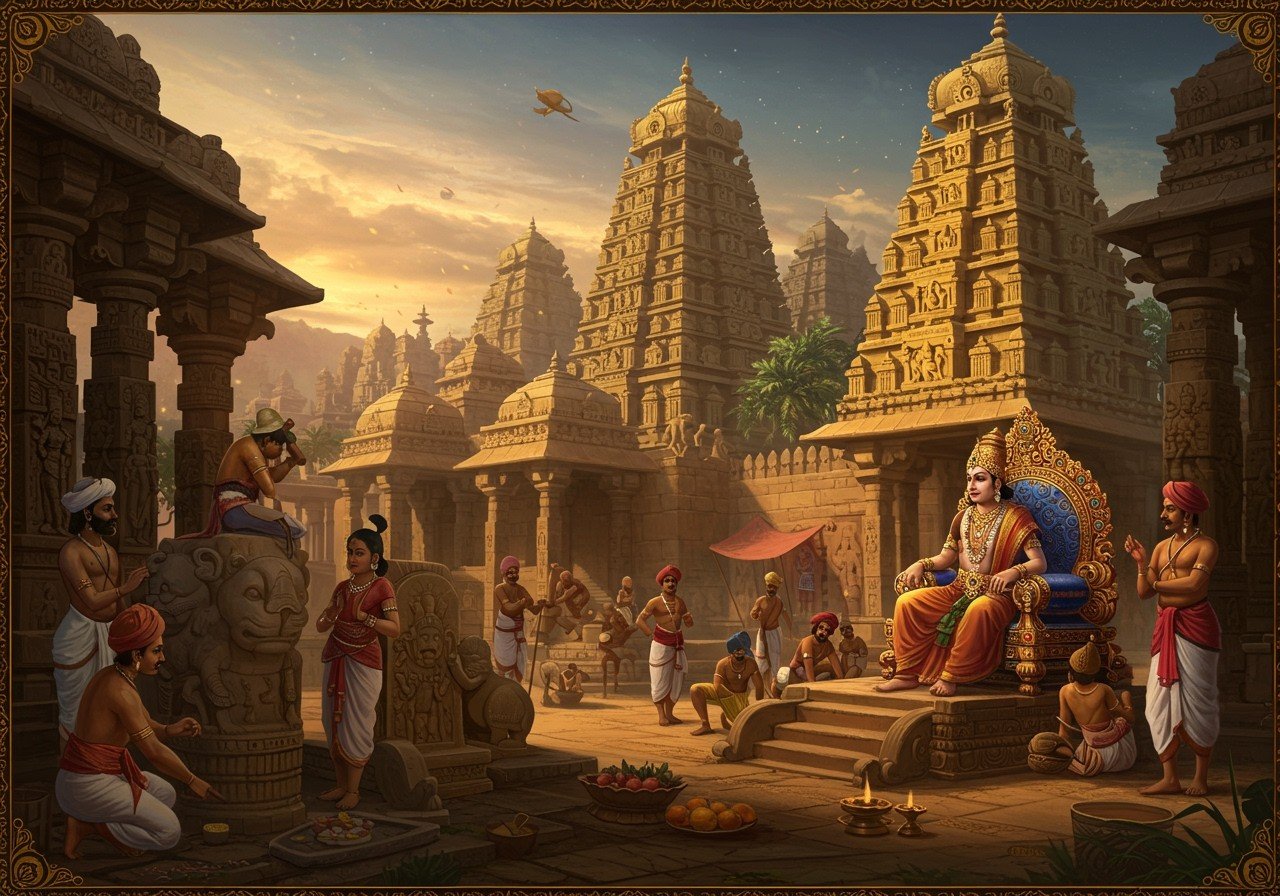
The Kadamba Dynasty, founded by Mayurasharma in the 4th century CE in Karnataka, India, holds a significant place in ancient Indian history. This dynasty is renowned for its unique contributions to administration, remarkable achievements, and stunning architecture. This blog post delves into the intricacies of their governance, notable accomplishments, and architectural marvels, providing a comprehensive understanding of the Kadamba legacy.
Historical Background
Origins and Expansion of the Kadamba Dynasty
Mayurasharma, originally a Brahmin scholar, transitioned into a warrior king after rebelling against the Pallavas. This marked the beginning of a powerful era. The kingdom expanded across regions of Karnataka, Goa, and parts of Maharashtra. Notable rulers like Kakusthavarma and Shivakoti played pivotal roles in the kingdom’s growth and stability. The dynasty significantly shaped the political landscape of South India. Eventually, it was absorbed into the Chalukya Empire. However, their influence on the socio-cultural fabric of the region, particularly the development of Kannada literature and language, remained profound.
Kadamba Dynasty Administration
Well-Structured Administrative System
The Kadambas implemented an advanced administrative system. The king, considered a divine representative, held centralized power. The Mahasabha (great assembly) played a crucial role in local governance and decision-making processes. Administrative divisions comprised Nadus (districts) and Kampanas (sub-districts), enabling efficient management. An innovative land revenue system fueled agricultural growth and trade. A robust judicial system ensured law and order, while the military strategically employed cavalry and elephants. Diplomatic ties and alliances with neighboring kingdoms were carefully maintained.
Kadamba Dynasty Achievements
Lasting Contributions Across Various Fields
The Kadamba rulers left a lasting legacy through contributions in diverse fields. They established Agraharas (Brahmin settlements) dedicated to education and scholarly pursuits. Their patronage led to significant advancements in literature, with works in Sanskrit and Kannada flourishing. They fostered progress in science and technology, particularly in metallurgy and construction. Religion and philosophy thrived under their rule, with support for both Jainism and Hinduism. Trade and commerce flourished, contributing to economic prosperity. Art and culture were patronized, resulting in intricate sculptures and exquisite paintings. Infrastructure development, including roads, irrigation systems, and temples, further enhanced their reign.
Kadamba Dynasty Architecture
Unique Architectural Legacy
Kadamba architecture is distinguished by its pyramid-shaped towers, known as the Kadamba Shikara. The Madhukeshwara Temple in Banavasi, adorned with intricate carvings, stands as a prime example of their architectural prowess. Their style blended indigenous elements with influences from other regions, creating a unique aesthetic. Locally sourced materials and advanced construction techniques were employed. Temple architecture played a vital role in promoting religious and cultural activities, reflecting the dynasty’s power and prosperity. The temples in Kolar, known for their exquisite paintings and murals, showcase the influence of Hinduism, Buddhism, and Jainism on Kadamba art and architecture. Inscriptions and coins from this era offer invaluable historical records of their reign.
Cultural Impact
A Rich Cultural Legacy
The Kadamba Dynasty’s influence extended beyond administration and architecture, permeating various cultural aspects. They championed Kannada language and literature, nurturing poets and scholars. Their inclusive approach integrated diverse religious practices, fostering harmony among different spiritual communities. Festivals and rituals from their era continue to be cherished as part of the regional heritage. Local art forms, including dance, music, and theatre, flourished under their patronage. Historical sites and monuments serve as tangible reminders of their influence. Their traditions continue to shape the cultural identity and practices of modern-day Karnataka and Goa. Understanding their contributions offers valuable insights into the development of Indian civilization.
Poojn.in: Connecting You to the Kadamba Heritage
Poojn.in, India’s largest store for cultural goods and services, provides a unique opportunity to connect with the rich heritage of the Kadamba Dynasty. Explore our collection of authentic items for temple worship, home shrines, and cultural preservation:
- For Temple Worship and Rituals: Pooja Asans provide a sacred space for your rituals, reminiscent of ancient practices. Holy powders and herbs, similar to those used in Kadamba-era temples, enhance your connection to the past. Explore our range of holy utensils crafted with traditional designs.
- For Home Shrines: Create a sacred space in your home with deities and idols inspired by Kadamba architectural motifs. Adorn your shrine with temple decoration items that reflect Kadamba artistic traditions.
- For Cultural Preservation: Engage in traditional rituals with authentic ritual items and pooja kits. Explore our curated collection of temple worship materials.
Visit www.poojn.in to discover our complete collection and enrich your connection to this remarkable historical era.
Conclusion: The Enduring Legacy of the Kadamba Dynasty
The Kadamba Dynasty remains a shining example of ancient India’s rich history, demonstrating the impact of effective administration, remarkable achievements, and unique architectural style. Their legacy continues to inspire and influence the cultural and architectural landscape of Karnataka and beyond.


